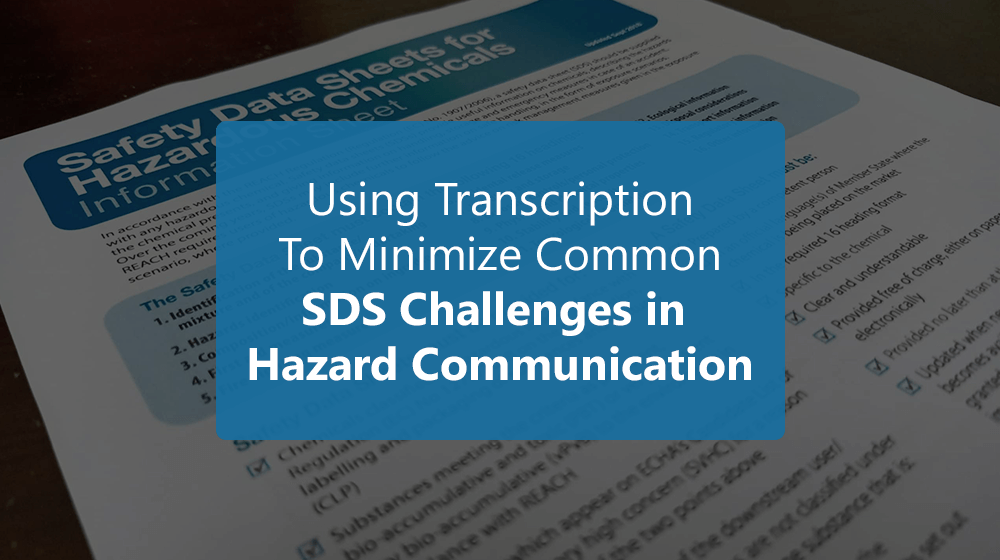Accurate speech recognition is essential for transcription services. To maintain accuracy, punctuation is vital. Read on to learn how punctuation influences accuracy, techniques for improvement, and its practical applications.
Understanding the Role of Punctuation in Speech Recognition
Speech recognition systems convert spoken language into text using complex algorithms that interpret speech sounds, identifying words, phrases, and sentences. These systems face challenges due to the fluidity and variability of human speech, as people speak at different paces, with varying intonations, and often in incomplete or run-on sentences. Punctuation segments spoken language into understandable and meaningful text by providing cues about the structure and flow of the conversation.
The Speech Recognition Algorithm for Transcription
The backbone of any transcription service is the speech recognition algorithm. These algorithms are trained on vast datasets of audio recordings and their corresponding transcriptions. They learn to recognize patterns in sound waves that correspond to specific words and phrases. However, the absence of punctuation in these transcriptions can lead to misinterpretations and errors.
For instance, consider the sentence: “Let’s eat, Grandma.” Without the comma, it becomes “Let’s eat Grandma,” which conveys an entirely different meaning. Proper punctuation helps the algorithm distinguish between segments of speech, improving transcription accuracy.
The Impact of Punctuation on Transcription Accuracy
Punctuation marks such as commas, periods, question marks, and exclamation points provide essential information about the structure of a sentence. They indicate pauses, stops, and the overall tone of the speech. When a speech recognition algorithm accurately detects and applies these punctuation marks, it produces transcriptions that are more accurate and easier to read and understand.
For example, consider the following sentences:
- “He said he would come but he didn’t.”
- “He said he would come, but he didn’t.”
The second sentence, with the comma, is clearer and more grammatically correct. By incorporating punctuation, speech recognition systems can produce transcriptions that better reflect the intended meaning of the speaker.
Improving the Analysis of Qualitative Data
In social sciences, researchers analyze qualitative data from interviews, focus groups, and other spoken sources. Accurate transcription is critical for identifying themes, patterns, and insights. Effective punctuation ensures transcriptions capture the nuances and context of spoken data, enabling better analysis of qualitative data.
Enhancing AI Tools for Academic Researchers
Academic researchers use AI tools for literature reviews, data collection, and content analysis. These tools rely on speech recognition algorithms to transcribe audio recordings of lectures, interviews, and discussions. Improving transcription accuracy through effective punctuation ensures reliable and precise data, enhancing research quality.
Techniques for Improving Punctuation in Speech Recognition
Advanced Machine Learning Models
Modern speech recognition systems use advanced machine learning models, such as deep learning and neural networks, to improve performance by recognizing words, phrases, and appropriate punctuation based on context. For instance, Google’s speech-to-text API and Microsoft’s Azure Speech Service use sophisticated algorithms to incorporate punctuation into their transcriptions, analyzing audio quality and context to produce accurate and readable text.
Contextual Understanding and Language Models
Contextual understanding is crucial for accurate punctuation. Speech recognition algorithms must be able to understand the context in which words are spoken to determine the appropriate punctuation. Language models, such as OpenAI’s GPT-4, have demonstrated significant advancements in contextual understanding, enabling them to produce more accurate transcriptions with proper punctuation.
These models use vast amounts of text data to learn the patterns and structures of language. By incorporating these language models into speech recognition systems, developers can enhance the system’s ability to accurately place punctuation marks, thereby improving transcription accuracy.
User Feedback and Manual Corrections
While automated systems are becoming increasingly accurate, user feedback and manual corrections remain essential for refining the performance of speech recognition algorithms. Users can review and correct transcriptions, providing valuable data that can be used to further train and improve the algorithms.
For example, transcription services like Otter.ai allow users to edit transcriptions and add punctuation manually. This feedback loop helps the system learn from its mistakes and improve its accuracy over time.
Practical Applications and Benefits
Enhancing Audio Quality for Better Transcriptions
One of the critical factors affecting speech recognition accuracy is audio quality. Clear and high-quality audio recordings are easier for algorithms to transcribe accurately. However, even with excellent audio quality, the lack of proper punctuation can still lead to errors and misinterpretations.
By focusing on punctuation, transcription services can produce more accurate and reliable transcriptions, even from recordings with suboptimal audio quality. This is particularly important in fields such as legal and medical transcription, where precision is crucial.
Streamlining Data Collection Processes
In various industries, data collection processes often involve recording and transcribing interviews, meetings, and other spoken interactions. Accurate transcriptions with proper punctuation can streamline this process, making it easier to organize and analyze the collected data.
For instance, in market research, focus group discussions are commonly recorded and transcribed for analysis. Proper punctuation in these transcriptions ensures that the insights derived from the discussions are accurate and meaningful, ultimately leading to better decision-making.
Improving Accessibility and Inclusivity
Accurate transcriptions with proper punctuation also play a vital role in improving accessibility and inclusivity. For individuals with hearing impairments, transcriptions provide an essential means of accessing spoken content. By ensuring that these transcriptions are accurate and well-punctuated, we can enhance the accessibility of information for everyone.
Additionally, transcriptions with proper punctuation can assist non-native speakers in understanding spoken content more effectively. The clear segmentation of sentences and phrases helps them follow along and comprehend the material more easily.
Conclusion
Incorporating punctuation in speech recognition improves transcription accuracy and readability, benefiting diverse projects. Advanced machine learning and user feedback enhance these systems, leading to better quality transcriptions and an improved user experience in a digital world. Professional transcription services like ANT Datagain know the importance of punctuation and make sure to include it in their work.

















